E33: An Interview with Donald Shoup and a Conversation about Parking Minimums
Donald Shoup, FACIP, author of The High Cost of Free Parking, discusses parking minimums, paid parking and Pearl Harbor.
E33: An Interview with Donald Shoup and a Conversation about Parking Minimums
Donald Shoup, FACIP, author of The High Cost of Free Parking, discusses parking minimums, paid parking and Pearl Harbor.
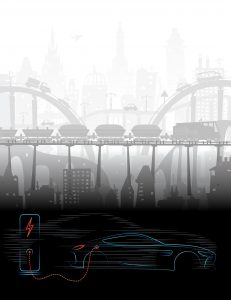 By Robert Ferrin
By Robert Ferrin
A quiet revolution is occurring in the transportation system as national, state, and local governments are planning toward a carbon-neutral future to combat poor air and water quality and climate change. Automakers, too, are reacting to these currents of change. A recent Forbes article highlighted a dozen auto manufacturers that will have electric vehicle models in production in 2020. And forecasts are calling for up to 40 percent of car sales to be electric vehicles by 2040. Put simply, the electric vehicle is here to stay. With the momentum building, how does the parking and mobility industry fit into an electric transportation future?
In this month’s issue of Parking & Mobility, the IPMI Research & Innovation Task Force, Electrification Working Group asked industry experts to give us some insights into what the future will look like and what we can do now as parking and mobility practitioners to be successful. Read it here. And after you read this thought-provoking article, leave the Task Force your comments on what you’d like to see the Working Group focus their efforts on next by taking our two-minute survey.
Robert Ferrin is assistant director for parking services in Columbus, Ohio.
 By Jonah Eidus
By Jonah Eidus
It shouldn’t take a global pandemic to demonstrate the benefits of a more sustainable future. Yet Los Angeles, which is notorious for its poor air quality, recently experienced some of the cleanest air in the world and its longest stretch of good air quality in more than 25 years. Massive declines in air pollution have also been noted in New York, Chicago, Seattle, San Francisco, and Atlanta. But sustaining these improvements will be impossible unless clean energy becomes a priority.
The current crisis has underscored the urgency of accelerating the transition to a more sustainable future; a fully electric transportation sector is a key component of that future. In fact, the U.S. Environmental Protection Agency estimates that tailpipe emissions are responsible for more than 50 percent of our nation’s smog-forming pollution and roughly 30 percent of greenhouse gas emissions. Replacing gas-powered cars with electric vehicles is one of the primary steps we can take to make the current air quality improvements last when the economy shifts into recovery.
Supporting that transition with legislation–including funding support in economic recovery stimulus packages focused on infrastructure projects–is the key to cleaner air and healthier humans. A recent study published by Harvard University found that people living in areas with high levels of pollution were more susceptible to the coronavirus than those from areas with cleaner air. These real-life consequences are preventable if we can accelerate the shift to zero-emissions vehicles.
EV drivers will rely on a combination of charging at home, work, and on the go. For on the go, it’s estimated that the U.S. will require as many as 45,000 public DC fast chargers (DCFCs) by 2025—a nine-fold increase from the approximately 5,500 public DCFCs currently in operation. Fast charging enables customers to integrate charging into their everyday lives and for people living in multifamily residences, reliable access to public fast charging is a near prerequisite to owning an EV.
Now is the time to double down on our commitment to accelerating the adoption of electric vehicles and the deployment of EV public fast charging infrastructure in the United States. We urge IPMI members to join the more than 200,000 EV drivers, site hosts, EV manufacturers, policymakers, and stakeholders who are committed to going electric. Together, we can create a cleaner and greener future for all.
Jonah Eidus is vice president of strategic partnerships with EVgo.
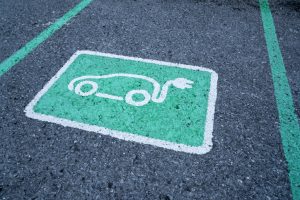 A bill that would have extended free parking for electric vehicles (EVs) in state-owned facilities and at metered spaces in Hawaii died without being passed; EV drivers started paying for parking July 1.
A bill that would have extended free parking for electric vehicles (EVs) in state-owned facilities and at metered spaces in Hawaii died without being passed; EV drivers started paying for parking July 1.
Free parking for EVs is a common perk of ownership and environmental advocates say it’s an incentive to buy the cars. A DOT spokesman blamed the bill’s death on an odd legislative session during COVID-19; EV drivers had received free parking in Hawaii since 2012 and it was a popular thing–the airport alone lost $4 million per year in potential revenue because of it. The bill introduced this year would have extended that free parking for three years.
EVs can still drive in HOV lanes regardless of occupancy. Read the whole story here.
 By Paul Wessel
By Paul Wessel
I’ve been thinking quite a bit lately about resilience, technically defined as “the ability to prepare and plan for, absorb, recover from, and more successfully adapt to adverse events.”
While our country clearly has fallen short on preparing and planning for the current COVID-19 adverse event, we are figuring out in real time how to absorb, recover from, and (we hope) successfully adapt–and I am struck by the role of the much-maligned, single-occupant vehicle (SOV) in making our way through.
While social distancing and sheltering at home discourage shared-transit use at the moment –and potentially strangle it in the long term–my trusty all-electric Chevy Bolt sits ready for those trips to the pharmacy and market and, if need be, hospital. If supply chains break down, bus drivers can’t drive, or gasoline can’t get delivered, as long as I have electricity (should’ve installed that solar energy system on my roof), my family is fine.
The resilient SOV was brought home to me by GM and its OnStar subsidiary’s announcement that it was giving me and other GM owners car-based free Wi-Fi and “crisis assist” (emergency operator assistance) service. So if the world goes to hell in a handbasket, my “drevice,” as my wife calls it, can keep me connected with the rest of surviving humanity and necessary emergency services.
Resilience draws from biology’s concept of adaptation as the “mechanism by which organisms adjust … to changes in their current environment.” It may be that the SOV that connects us to the outside world–or delivers us food from local restaurants or markets while we are sheltering at home–is both a cause of looming adverse events (transportation is the fastest growing source of CO2 emissions) and part of the way we survive. Can we work with both these conflicting ideas at once?
(For some good, nuanced thinking about the SOV and public transit, see transit planner Jarrett Walker’s CityLab piece on why those of who can will opt for our cars coming out of this crisis and why transit makes urban civilization possible.)
Paul Wessel is director, market development, with the U.S. Green Building Council. This post is part of a five-day series commemorating Earth Day 2020.
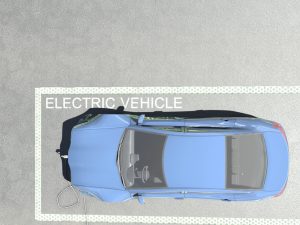 In response to what it’s calling a “climate emergency,” one district in the United Kingdom plans to offer free parking for electric vehicles. Traditionally-fueled vehicles will continue to pay to park.
In response to what it’s calling a “climate emergency,” one district in the United Kingdom plans to offer free parking for electric vehicles. Traditionally-fueled vehicles will continue to pay to park.
The Warwick District Council announced the plan yesterday, offering parking permits at no charge to drivers of EVs; it appears hybrid cars do not qualify for the offer. The cost to park for other drivers will increase slightly, at least for stays of more than four hours. The Council said the plan is designed to get people thinking more about buying electric-powered vehicles and driving less overall.
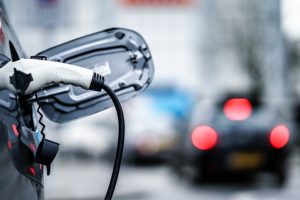 Driverless cars aren’t ready for prime time yet but analysts say electric vehicles definitely are, and that 2020 could go down as the year of the EV.
Driverless cars aren’t ready for prime time yet but analysts say electric vehicles definitely are, and that 2020 could go down as the year of the EV.
The Motley Fool says, “Range anxiety isn’t completely gone, but today it shouldn’t be any harder to drive an EV a long distance than a conventional vehicle. Many have ranges of over 250 miles on a single charge, and the charging infrastructure across the U.S. is accessible almost anywhere. According to German website Statista, there are 20,000 charging locations and 57,000 charging plugs across the U.S.”
Kia and Hyundai are both set to launch EVs with ranges of 250+ miles on a single charge, and Porsche is readying to roll out its $103,800 Taycan, designed to take on the electric supercar market with a less-than-three-second, zero to 60 time and 256 miles of range.
Read the whole story here and tell us in the comments–is your organization beefing up charging capabilities next year?
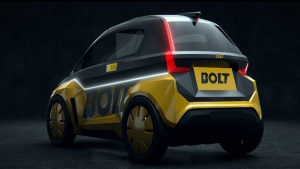
Saying his travels around the world have made it clear cities need help with congestion, retired world-record-holding sprinter Usain Bolt last week launched his own vehicle: a two-seater, electric car with a suggested price of $9999.
Delivery of the Bolt Nano is scheduled to begin in 2020. It will feature a swappable battery and seat two passengers–one in front and one behind. Four will fit in a traditional parking space. It will be all-electric and zero-emissions. Orders are being accepted now.
The company also launched a new e-scooter business in Paris. Users there find and pay for the scooters with an app, and the company says the vehicles are completely recyclable, including the batteries.
 By Michelle Wendler, AIA
By Michelle Wendler, AIA
The development of connected and autonomous technology has opened up a future of endless possibilities for the parking and mobility industry, all with the potential to not only change the way we park and move but also open up new avenues of sustainable design that will make our world a better place.
Sustainability is already an integral part of everyday best parking practices, from installing photovoltaic panels to pursuing Parksmart certification. As we continue to innovate and get closer to a truly connected future, we will create even more green opportunities. The continued proliferation of electric vehicles will further reduce emissions. The evolution of driverless cars may open up possibilities to densify and reduce street and lot parking. Connected cities have the potential to reduce congestion and create more sustainable mobility solutions.
While we may not have definitive answers as to what the impact of connected and autonomous technology will be and how and when our infrastructure will evolve, this exciting new horizon provides us with some unique opportunities to help shape that future. The value we as parking professionals can offer our clients is to design today’s projects with an eye on tomorrow, to put them in a better position to adapt when the time comes.
Things owners can do now to prepare today’s parking facilities for tomorrow’s needs are to design with future electrical capacity, wireless needs, and EV charging technology in mind. Even if this infrastructure is not necessary today, it can avoid costly upgrades in the future. Owners can also view structured parking as park-once transportation hubs and as such, incorporate bike lockers and information about public transit options available once you park.
Likewise, evaluating the possibilities and upfront costs of adaptive reuse can help owners make informed decision on how to make the most out of their facility during the course of its lifespan. Adaptive reuse is an exciting topic, but it is also a costly undertaking that requires careful consideration to determine if it is the right approach for a specific project. For more information on the cost of adaptive reuse, click here.
This Earth Day, let’s celebrate the possibilities a connected and autonomous future offer us, with an eye on the steps we can take now to help prepare for it.
Michelle Wendler, AIA, is principal with Watry Design, Inc.